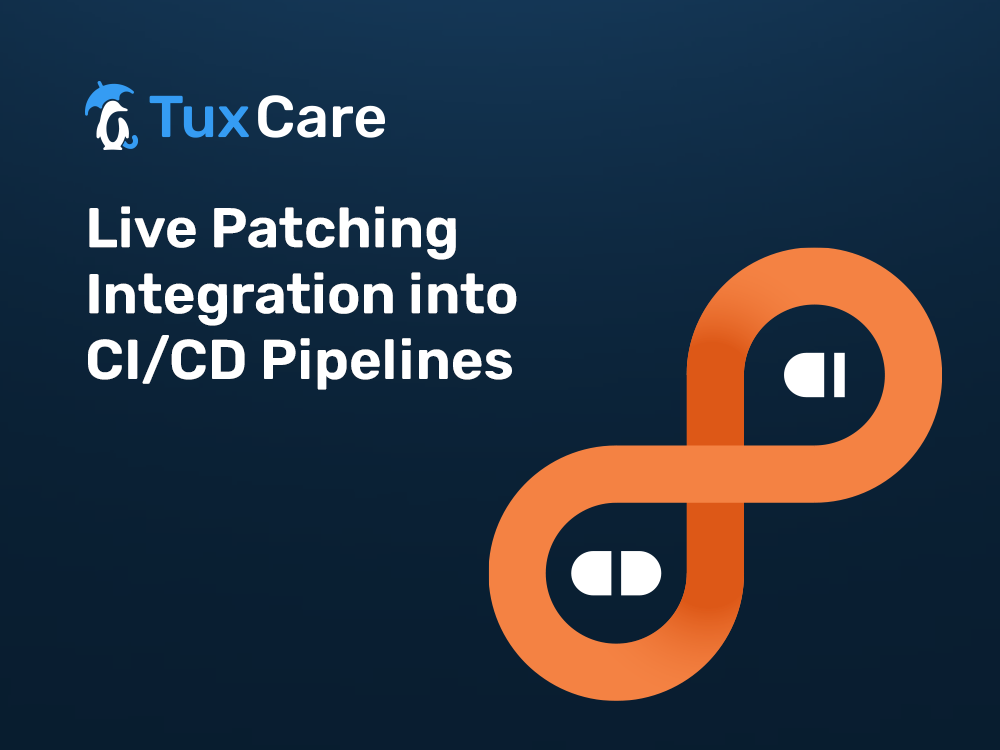Live Patching Integration into CI/CD Pipelines
Continuous integration (CI) refers to testing code changes before deployment to production. Continuous delivery (CD) is where code changes are automatically deployed to production systems without manual intervention. Organizations can use these methodologies for system administration with live patch management.
Understanding CI/CD Pipeline Development
Continuous integrated and continuous delivered, commonly abbreviated to CI/CD, refers to a practice where developers integrate new features into an existing system daily and deploy them to a test server. Once the tests pass, they can be deployed to a live server. The developer enables automation from code development for the entire code migration process. A typical example would be to deploy a website to a staging server.
Continuous integration (CI) and continuous delivery (CD), with their reliance on automation tool processes, can help you track and record the changes made to your systems. During the development stage, it’s common to include approval steps in case you want to exercise more oversight and review the change process. These stages become integrated into the following:
- Code Development including code dependencies
- Application Tests supporting the application deployment strategy
- Integration Testing with the continuous integration process
Continuous delivery (CD) helps teams deliver software faster by merging their work into a shared branch, or trunk, more frequently—often even daily. Once a team member’s change to an application is committed, that change is tested by automatically building the application, then deploying the build to a test environment. If automated testing finds a problem, the continuous deployment process makes it easy to roll back the commit and try again. This process ensures that every change is delivered safely and reliably.
Continuous deployment means developers automatically deploy code into production without manual intervention. In contrast, continuous delivery means developers manually deploy code into production after passing tests.
Differences between DevOps and CI/CD
As classical DevOps lifecycle phases go, the test happens after the deployment. But modern DevOps deployment processes allow for some tests to occur during the planning, development, and operation stages. These tests help identify potential risks and vulnerabilities before they become actual issues.
By definition, DevOps outlines a software development process and an organizational culture shift that speeds the delivery of higher quality software by automating and integrating the efforts of development and IT operations teams–two groups that traditionally practiced separately from each other or in silos.
A fundamental charter of DevOps teams is to help organizations achieve greater levels of integration between their development and operations processes. Without an effective DevOps strategy, they often developed automated deployment pipelines in isolation and without consideration for downstream users. To ensure a smooth patch management cycle, an organization must create an integrative software patch management pipeline releases from source control to production.
Patching Life Cycle into the CI/CD stream
Organizations using continuous integration pipeline (CI) and continuous delivery (CD) technologies can more quickly and reliably deploy software updates. However, these organizations still need to invest more resources into understanding and implementing best practices for their specific use cases.
The automation of software releases and deployment, including infrastructure as developer tools into the backend of your toolchain, wean operations teams from manual processes toward treating infrastructure as programmable resources. Once a vendor has released a fix for a particular security vulnerability, organizations must ensure they deploy the fix promptly. If an organization doesn’t take action quickly enough, its systems may become vulnerable to attack.
Before proceeding with patches and updates, explicitly define the feedback loop for each step in your CI/CD pipeline from code to production.
TuxCare Live Patching and Extended Lifecycle Support for CI/CD
Knowing which host or application that have applied patches within your software deployment environments is crucial. They can quickly become complicated and error-prone if you manually track them. If you have multiple developers working on the project, it can magnify these issues, highlighting just how important it is for everyone involved to stay up-to-date on their code.
Particularly in CI/CD environments, waiting to apply security patches until you’re ready to restart systems and devices leaves your organization vulnerable and risks your compliance posture.
TuxCare’s live patching solutions protect your Linux systems by rapidly eliminating vulnerabilities without waiting for maintenance windows or downtime. With TuxCare, IT teams can automate taking new patches through staging, testing, and production on all popular Linux distributions deployed within the CI/CD pipeline.
Enabling PHP/Python End of Lifecycle Services from TuxCare
PHP and Python code, like any other, will go sunset. What happens if you need more time to prepare for the latest and greatest code update? Application attacks and exploitation attempts will occur on your websites. How can you buy yourself and your organization time to develop new production code while receiving updated security patches?
Vulnerabilities will exist in any code, including PHP. Many vulnerabilities never become exploits. PHP/Python is subject to zero-day attacks. ELS and live patching will reduce the threat vector by providing application patching for end-of-life versions of PHP and Python.
Why TuxCare?
TuxCare helps secure CI/CD pipelines throughout continuous deployment, securing with immediate patching of new threats. Clients leveraging Python automation scripts can leverage the TuxCare API to access the latest patches and security updates.
TuxCare is the only provider to live patch all vulnerabilities in kernels, shared libraries, virtualization platforms, and open-source databases across all popular distributions.
TuxCare features flawless interoperability with vulnerability scanners, security sensors, automation and reporting tools, and our ePortal management platform. This dedicated private patch server runs inside your firewall on-premises or in the cloud.



 Documentation
Documentation Login
Login



